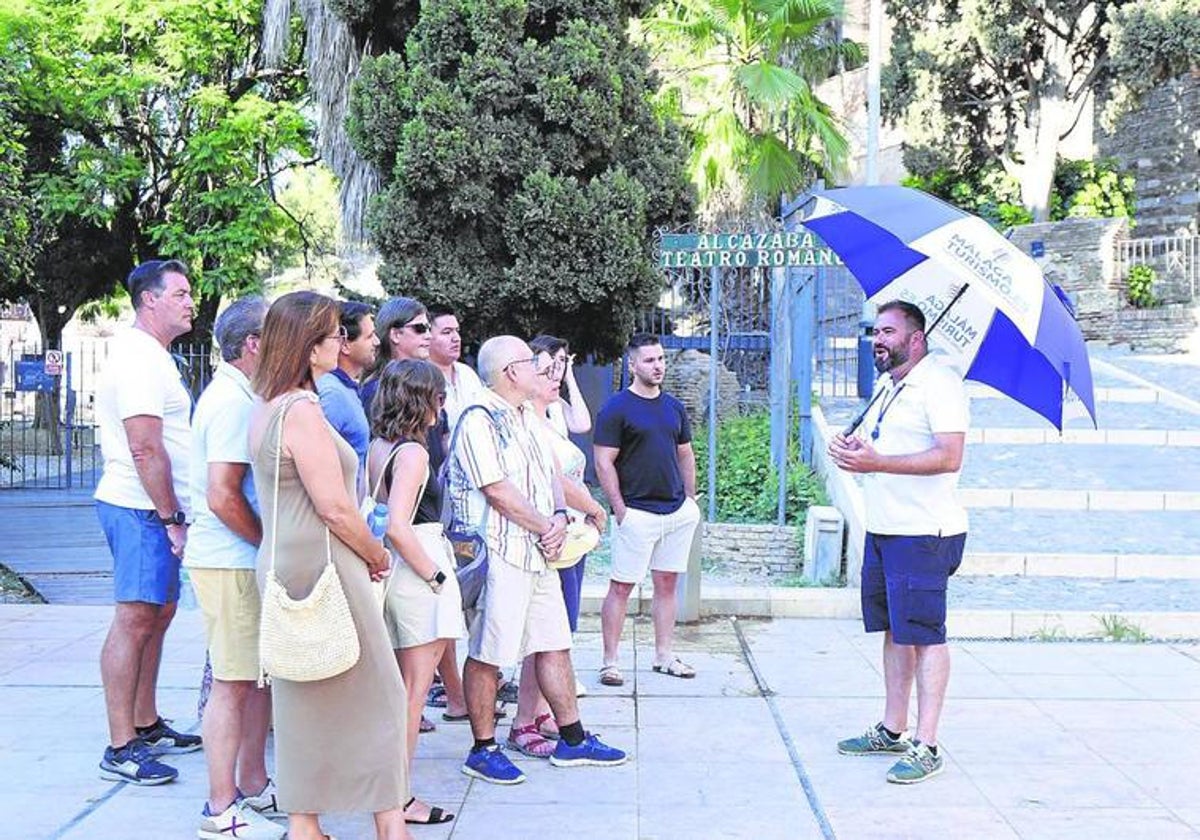How the pioneer of free guided walking tours launched in Malaga
It all started in Amsterdam for Carlos Hernández, who recognised a business niche that had yet to be exploited in the Andalusian city
Susana Zamora
Malaga
Tuesday, 22 August 2023, 09:24
A trip to Amsterdam opened his eyes. He visited the Dutch capital and discovered it in such a "fascinating" way thanks to a professional guide, he then had a 'lightbulb' moment: to introduce it to Malaga.
It was 2010 and at that time, Carlos Hernández, was working as an activity coordinator in several Spanish schools for foreigners. "I had met many tour guides, but they all worked on a paid basis," the Granada-born 43-year-old said.
On his return to the Andalusian city, he realised that there was a business niche that no one had exploited, and he was not willing to let it pass him by. "It fitted in with what I was doing and I was convinced that it would work". He wasn't wrong. Just seven months later, coinciding with World Tourism Day on 27 September 2010, the pioneer of free guided walking tours in Malaga took the plunge with his first group.
Since then, growth has been exponential. He has gone from working alone to teaming up with six other guides - all self-employed - under the brand malagaturismo.es. They have 5,500 reviews on Google and went from serving 100 tourists a month a decade ago to now, more than 2,000 between the whole team. "The growth was such that I had to team up with other colleagues to meet all the demand and organise breaks," Hernández said.
But the early days "were not easy" he pointed out. "There were few guides and a lot of nudging to keep new ones out," Hernández said. He even suffered threats and intimidation from some 'traditional' guides, who openly expressed their suspicion of his business strategy.
"Those of us who work as free tours guide have to have our accreditation, because there are inspectors from the Junta de Andalucía who regularly ask for it. I know that there have been fines in Malaga for not having it," Hernández, who has seen foreign tourism schools bring their students to do internships as guides with minimum documentation, said.
English, French and 'Malaguita'
In addition to being a philologist, Hernández is a sociocultural animator, has a degree in interpretation and an advanced vocational training degree as tourist guide, interpreter and for assistance, which he studied to obtain his qualification as a tourist guide in Andalucía. He is also fluent in English, French and 'Malaguita'. He explains popular local expressions to his visitors, such as 'estar alikindoi' (meaning to be attentive and comes from 'look and do it').
Hernández is always asked about the popular 'espetos' (skewered sardines), and how or when they're best eaten. He is not short of anecdotes about this topic and pointed out that during one of the tours with a group from the USA and, while explaining how to eat them, the impatience to taste them led one tourist to put the whole sardine in his mouth, "head included". On another occasion, in his eagerness to transport visitors to 4th century Malaga, in front of the Roman Theatre, he gave them a sniff of the recipe for garum sauce, a Roman delicacy made from fermented fish. "We tried to recreate the atmosphere of the time, but one child broke the magic when he revealed to everyone that it smelled like his brother's slippers," Hernández said.
He defends his profession and tries to distinguish himself from the rest with audiovisual material, which tourists can use on their mobile phones during the tour. He is not short of work all year round, "especially now that Malaga is in fashion, that free tours have become popular and that our company has made a name for itself".
Hernández said that in summer they have 40 or 50 groups a month, in the low season (from the end of October until Easter) they can attend to about 30, which they compensate with private tours and school activities. Despite all this, they earn a salary of about 1,500 or 2,000 euros. "The tips don't usually exceed 10 euros, although on one occasion 50 euros was given; I still remember that one."
